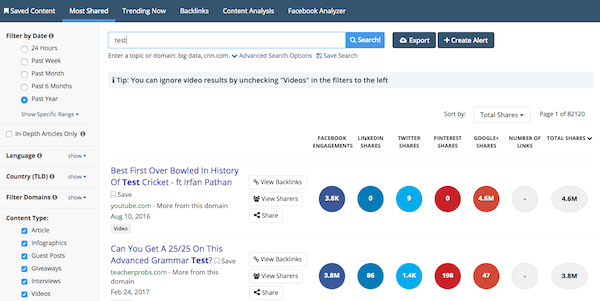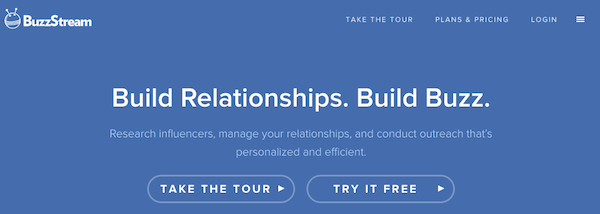Want to hear something kinda crazy?
At the time I’m writing this article, I’m 25 years old and… I’ve been cited by the New York Times, Wall Street Journal, CNN, Foundr Magazine, Forbes, and more!
I don’t tell you that to brag. I share that with you because I know what I’m talking about.
If a young kid can easily get into the media and drum up attention and interest in his business, SO CAN YOU!
Of course, if it was super easy, everyone would be in the media… right?
Wrong!
The main reason that I find entrepreneurs fail to get media attention for their business is that they don’t have the right strategy and they don’t have the right tools.
These proven strategies are guarded behind the walls of highly paid PR firms. They’ll happily take your money, implement these techniques, and then see results.
Honestly? I don’t have anything wrong with PR firms. Many of them are doing a very good job of manipulating this entierly new media landscape.
However, I do want YOU to have access to the same information they do so that you can decide whether to do this yourself or hire someone to do it for you.
That being said, let’s get into some of the ways that you can get into the media and drive traffic to your business!
1. Haro
Haro is a free tool that you can use to position yourself as an expert. Reporters are always looking for credible sources for their stories. You can share your own expertise using this service.
Once you DO share your expertise, you’ll gain access to entirely new community – the readership of that publication. Many publications also allow you a link to your own website so that you can benefit from a surge of traffic.
2. Boomerang
Boomerang is a Chrome extension that you can use to schedule emails to go out at future dates and track whether or not someone has read your email.
You can use this tool when pitching reporters. Rather than waiting and hoping for a reporter to reply to your email, you can quickly identify whether or not they’ve actually read it. If they haven’t, you can send them another one!
3. Google Search
I know, it sounds basic, huh? However, Google is a very powerful way to identify publications and journalists that have written about similar businesses and products.
You can search for key words via the general search, news search, region, and also filter your search based on specific dates.
By using these search operators, you can quickly figure out which publications are actively publishing articles about specific. This will make it much easier to identify the one that you’re going to target.
4. BuzzSumo
BuzzSumo is an excellent tool that allows you to see what’s bubbling up across the web. Once you search for a key term, you can see all of the popular articles written on that topic.
You’ll get info about the number of social shares on different networks, the influencers for this topic, content type, and more.
Once you have this information, it will be easy to create a media list that you can begin to reach out to. In addition, you’ll quickly see the types of headlines that are working well on social media.
5. Your Subject Line Is Everything
Reporters and bloggers get lots and lots of emails every single day. I should know, I’m one of them!
As one business of many, it’s easy to get lost in that flood of emails.
The main way that you’re going to be able to stand out is with your subject line. If it’s just like everyone else’s, you’re probably going to get droned out by the noise.
An easy hack for improving the subject line of your email is to take a look at some of the other articles that this journalist has written and make your subject line similar.
Naturally, if they’re looking for that type of story, your email will pop out to them.
6. BuzzStream
If you want to, you can just use excel to keep track of your media list, who you’ve contacted, and which publications you’ve established a relationship with. You could also use a tool like BuzzStream.
BuzzStream gives you the ability to research influencers, conduct personal outreach, and manage your various media relationships.
7. Make Yourself Newsworthy
There has to be a reason that a reporter writes about you. They write articles that their audience will care to read. This includes breaking news, human interest stories, and interesting information.
You must have a story angle that the reporter will care about. If you’re just announcing some new product or app, that’s not newsworthy. It might be newsworthy within your own life, but it’s not on the global scale.
Why is this a story that people will care to read?
A lot of news stories are centered around trending events, or current topics that people want to learn more about.
For example, if there is some kind of big hacking scandal, you bet that there will be a bunch of news stories on how to keep your data more secure. If you have a product in this industry, it would be a great time to begin reaching out to reporters.
8. A Press Release Isn’t The Holy Grail
Your press release used to be the holy grail of PR. Now a days, it’s still important, but it’s more of a supplemental bit of material. The email that you use to pitch the story is far more important.
The press release has way more details than a simple email and it’s something important that journalists can reference, but you shouldn’t just rely on journalists to read it. Most won’t.
The key elements of your PR story should be contained in your email pitch and by the end of reading it, that individual should have a glimpse of what they story could look like and why they should write it.
9. Look Into Press Release Websites
Press release websites are a form of paid marketing. While they aren’t a silver bullet, they can help you get media attention. Here are a few:
10. Build a Relationship Before You Need It
The way that a PR company functions is simple. They build relationships and media lists before they need them.
By building a positive relationship with a journalist, they’re more likely to get a reply in the future.
You can do the same thing!
Next time that you don’t NEED SOMETHING from a blogger or a reporter, send them an email.
You can tell them that you liked a particular article that they’ve written, or that you have a question after reading it.
This can be the foundation of a relationship that you draw on when you have news to announce.
11. Make the Journalist Look Good
Journalists are people, just like you and me. They have a boss they have to report to.
One easy way to get on the radar of a journalist is to make them look good in the eyes of their boss.
You could offer to send paid traffic to the article that they write, or give them a genuine scoop that you’re not letting anyone else have.
It’s very similar to sales. You’re selling the journalist on the prospect of writing about you. The more you make it seem good for them, the more likely they’ll be to bang out a story.
12. Become a Local Success Story
The outright launch of your product might not be global news, but it is certainly local news, if you spin it that way.
Spend a few hours thinking about how you can position yourself as a local success story that would appeal to a local newspaper.
Maybe living in the town has enabled you to build this business for some reason. Maybe despite your success, you haven’t decided to move away because of such and such a reason.
People are always interested in what their neighbors and community members are up to. By positioning your story as a local success, which is also a success for the town, you can get an easy media hit.
13. Manufacture “Social Proof” That Everyone Is Writing About You
Well… I don’t exactly mean just manufacture it out of nowhere.
What I mean is that people are naturally more likely to write about you when other people are writing about you. This is an indication that readers want to read the story. If they take the time to write about you, it will bring them traffic.
Many marketers use the concept of social proof when trying to sell a product.
“This product is flying off the shelves!”
“We’ve already had 1,000 people buy this product.”
You can take this same approach when trying to convince a publication to write about you. As human beings, we’re wired to pay more attention to a popular story than a not so popular one.
Obviously, you should be 100% honest. I have seen some companies who have gotten in other media publications and have failed to mention that powerful fact.
Conclusion
These are a few easy ways to get media attention for your business. There are a lot more of them out there!
If you’d like to receive more content like this, be sure to subscribe down below and let me know if you have any questions.





